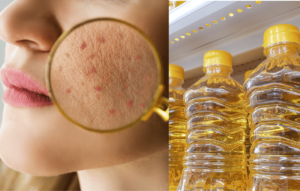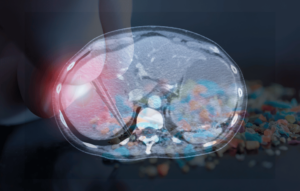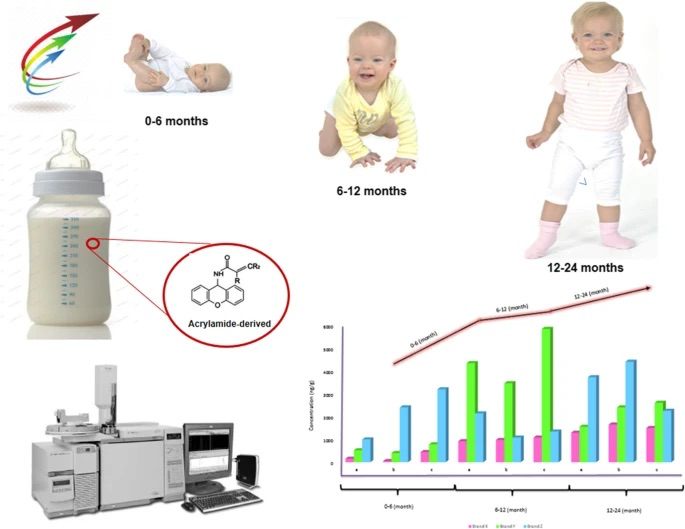For years, parents have been told that baby formula is a perfectly safe and necessary alternative to breast milk. But behind the marketing and regulatory assurances, what’s actually inside these formulas?
Toxic heavy metals, inflammatory seed oils, synthetic preservatives, microplastics, and even hormone-disrupting BPA. That’s the reality for millions of infants relying on formula for their early nutrition.
The FDA recently announced “Operation Stork Speed”, a new initiative aimed at improving formula safety, but is this real reform—or just another band-aid solution? Let’s break it down and explore why parents should be concerned about the state of modern infant nutrition.
Operation Stork Speed: What’s Changing?
The FDA’s Operation Stork Speed is supposed to strengthen the safety and reliability of infant formula in the U.S. Some of the key promises include:
Updating nutrient guidelines for the first time since 1998 (because baby nutrition science has obviously evolved since then).
Expanding contaminant testing for heavy metals, microplastics, and hormone-disrupting chemicals.
Encouraging greater transparency from formula manufacturers about their ingredients.
Allowing more personal importation of foreign formulas, which often have stricter safety standards.
Collaborating with scientific bodies to study the long-term effects of formula feeding.
Addressing emerging contaminants such as PFAS, BPA, acrylamide, and other endocrine disruptors that may have long-term effects on children’s health.
Under Operation Stork Speed, the FDA is calling on formula manufacturers to create more nutrient-dense, transparent, and safe infant formulas. Launched in January 2025, this initiative is part of HHS Secretary RFK Jr.’s Make America Healthy Again agenda, building on previous FDA strategies to fortify the nation’s formula supply chain.
While this sounds promising, the FDA has a long history of dragging its feet when it comes to protecting public health. Without real accountability and industry reform, these changes may be too little, too late. Additionally, many of these initiatives focus on monitoring and managing contamination rather than eliminating toxic exposures altogether.
The Problem with FDA Oversight
The FDA’s move to increase formula testing is long overdue, but is it enough? Consumer Reports and independent researchers have warned about these contaminants for years, yet little action has been taken until now.
Even the best regulatory policies mean nothing if manufacturers aren’t held accountable. Will formula companies be required to remove harmful ingredients, or will the FDA simply set more “acceptable limits” for toxins in baby food?
The Make America Healthy Again (MAHA) movement, spearheaded by RFK Jr., has been instrumental in pushing for stricter regulations in infant nutrition. Advocacy groups continue to press for greater accountability and transparency in food safety standards.
What’s Really Lurking in Baby Formula?
If you’ve ever taken the time to read the ingredient list on baby formula, you’ll notice it’s packed with questionable additives. Here are some of the biggest offenders:
1. Inflammatory Seed Oils: The Unwanted Fat Source
Formula manufacturers often use soybean, sunflower, and palm oil as fat sources. The issue? These oils are high in omega-6 fatty acids, which promote inflammation and can interfere with calcium absorption. Palm oil, in particular, has been linked to lower bone density in infants.
Additionally, soybean oil is known to contain phytoestrogens, compounds that mimic estrogen in the body. While adults can metabolize these compounds more efficiently, excessive exposure to phytoestrogens during infancy may have unintended hormonal effects.
2. Heavy Metals: A Hidden Danger
Independent testing by Consumer Reports found arsenic, lead, and cadmium in dozens of formulas. These toxic metals don’t belong anywhere near developing infants, yet they’re routinely found in food grown in contaminated soil and processed with lax oversight.
Arsenic exposure, even at low levels, has been associated with neurological damage and developmental delays in children. Lead, a well-documented neurotoxin, has no safe level of exposure, meaning that even trace amounts could potentially affect an infant’s developing brain.
3. Synthetic Preservatives: Prolonging Shelf Life at a Cost
Many formulas contain butylated hydroxyanisole (BHA) and butylated hydroxytoluene (BHT)—preservatives that prevent fats from spoiling. But here’s the problem: both have been linked to hormone disruption and potential carcinogenic effects. In a time when more parents are moving toward whole, organic, and unprocessed foods, why are these synthetic chemicals still in infant formula?
Long-term exposure to these compounds has been associated with oxidative stress, which can contribute to cellular damage, inflammation, and hormone imbalance. Babies, whose bodies are rapidly developing, are particularly vulnerable to these effects.
4. Plastics: Microplastics and BPA in Every Bottle
Studies show that microplastics and BPA from formula packaging and manufacturing processes end up in the final product. Research suggests these contaminants can cause intestinal inflammation, immune system stress, and hormone disruption—all while your baby is in their most vulnerable developmental phase.
Microplastics have been detected in virtually all tested powdered formulas, especially those stored in polyethylene-lined boxes. Once ingested, these plastic particles can accumulate in the body, leading to potential immune system dysregulation and chronic inflammation.
BPA (bisphenol A), a known endocrine disruptor, still leaches from can linings into liquid formulas. BPA has been linked to health problems like neurodevelopment issues, reproductive issues, and hormone disruption in several studies.
5. PFAS & Acrylamide: More Chemicals to Worry About
Per- and polyfluoroalkyl substances (PFAS), also known as “forever chemicals,” have been found in some formulas. These persistent chemicals do not break down in the environment and can accumulate in human tissues, leading to immune dysfunction, liver damage, and developmental issues.
Meanwhile, acrylamide, a known carcinogen, has been detected in heat-processed formula powders. Long-term exposure to acrylamide has been linked to nervous system damage and increased cancer risk.
What Are Safer Alternatives?
With so many concerns surrounding conventional infant formulas, parents are looking for safer, cleaner alternatives that prioritize nutrition without unnecessary toxins. Whether breastfeeding, choosing organic options, or advocating for industry reform, there are ways to ensure better nourishment for babies while avoiding harmful ingredients.
1. Breastfeeding When Possible
There’s no question that breastfeeding is the gold standard for infant nutrition, providing essential fatty acids, immune-boosting compounds, and the perfect nutrient balance for growth. However, many mothers face challenges—whether due to medical conditions, supply issues, or workplace restrictions. If breastfeeding isn’t an option, knowing what’s in the formula becomes even more important.
2. Best Store-Bought Formulas: Organic & European Options
Many parents opt for European baby formulas like HiPP, Holle, and Kendamil, which tend to have stricter regulations than their U.S. counterparts. These brands prioritize organic ingredients and often use lactose instead of corn syrup as the carbohydrate source. However, even the best European formulas still contain some vegetable oils like sunflower or rapeseed oil.
If shopping in the U.S., some organic formulas like Bobbie or Serenity Kids offer better ingredient profiles than conventional brands, though they still contain some questionable additives. The key is to look for formulas made from whole milk powder rather than skim milk and avoid those with corn syrup, synthetic preservatives, and excessive soy-based ingredients.
If you must use formula, consider organic and minimally processed options that avoid seed oils, synthetic preservatives, and unnecessary additives. European brands like HiPP and Holle tend to have higher safety standards than U.S. formulas.
3. Homemade Formula: A Controversial Yet Nutrient-Dense Option
For parents seeking the cleanest, most bioavailable nutrition for their infants, homemade baby formula is an option worth exploring. The Weston A. Price Foundation has shared recipes using raw milk, liver-based formulas, and goat’s milk, which provide a nutrient-dense alternative to store-bought formulas.
However, homemade formulas require strict adherence to proper preparation methods to ensure infants receive the correct balance of macronutrients and vitamins. Many pediatricians discourage homemade formulas due to the risk of imbalances, but when properly formulated, they can offer a healthier alternative than many mass-market formulas.
Some parents turn to homemade formulas using raw milk, liver, and bone broth to create nutrient-dense alternatives. While these options can work, they require careful preparation and nutritional knowledge to avoid imbalances.
4. Advocating for Better Infant Formula Standards
The best long-term solution isn’t just finding a “less bad” formula—it’s demanding real industry change. Parents and health-conscious consumers can push for better formula options by:
Demanding stricter regulations on heavy metals, seed oils, and synthetic additives.
Supporting brands that use clean, organic ingredients and prioritize whole milk powder.
Raising awareness about the dangers of conventional formulas and advocating for safer alternatives.
The Bottom Line: Babies Deserve Better
Operation Stork Speed is a step in the right direction—but not the solution parents deserve. Until we see true reform in the infant formula industry, parents must stay informed and demand better options for their children.
If you’re a parent, read labels, research your options, and advocate for higher safety standards. Your baby’s health is worth it.





















